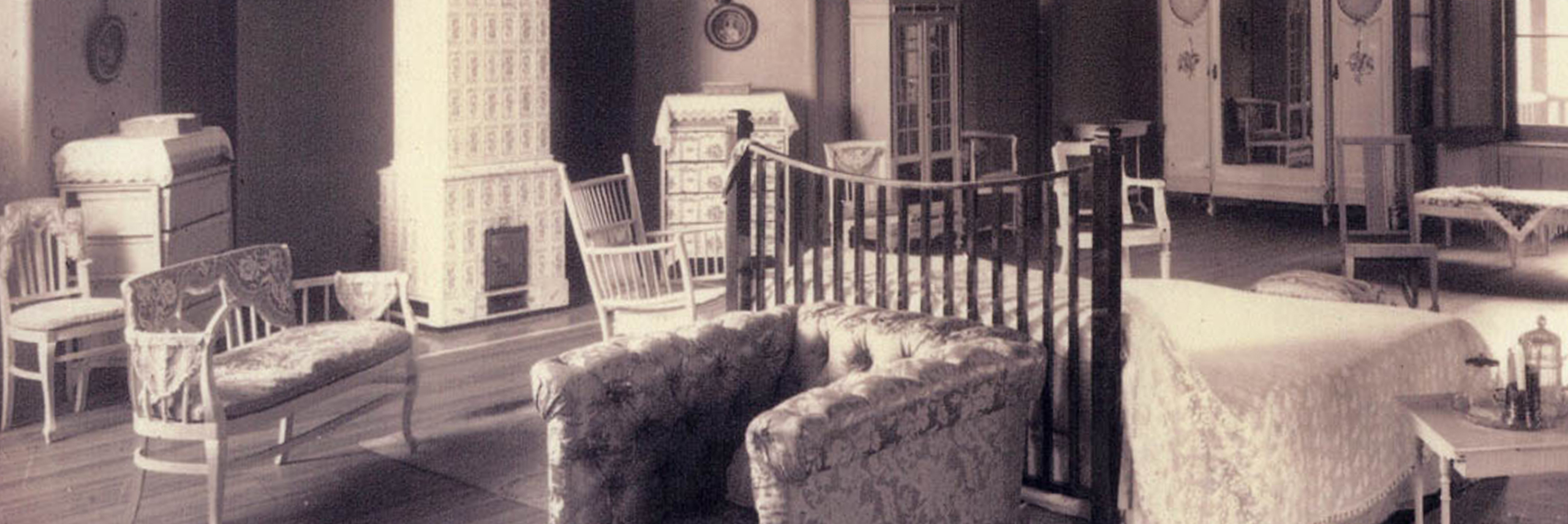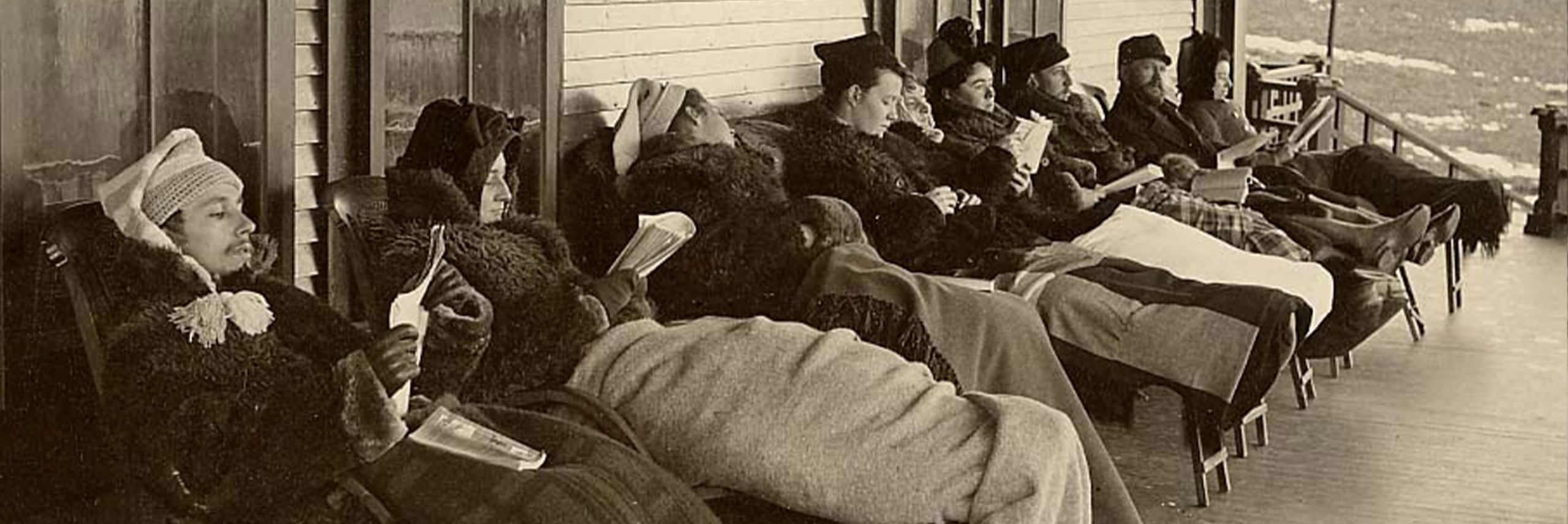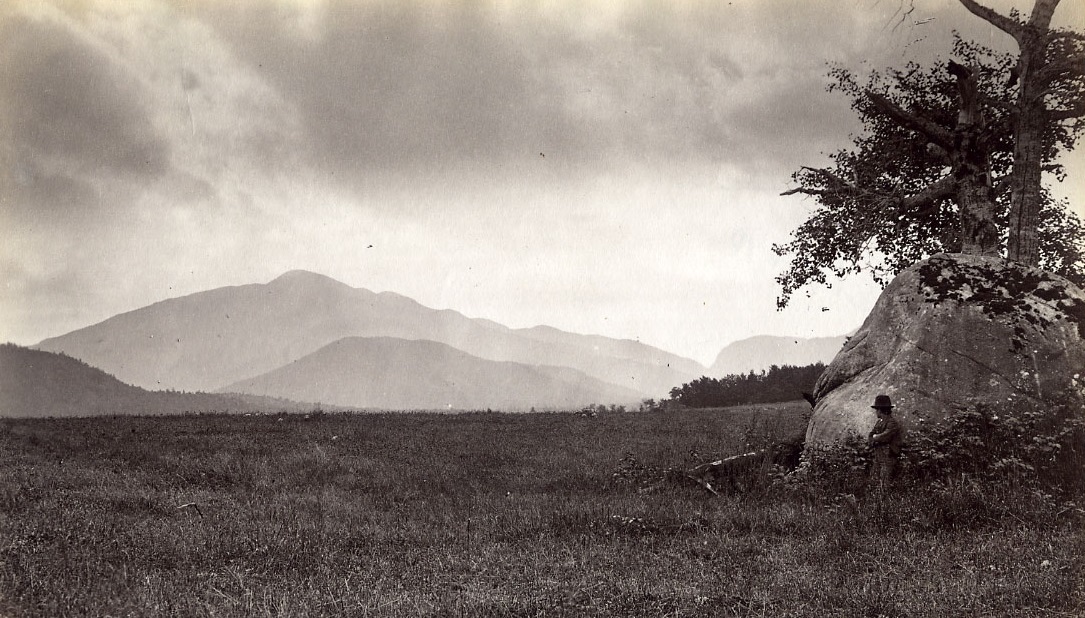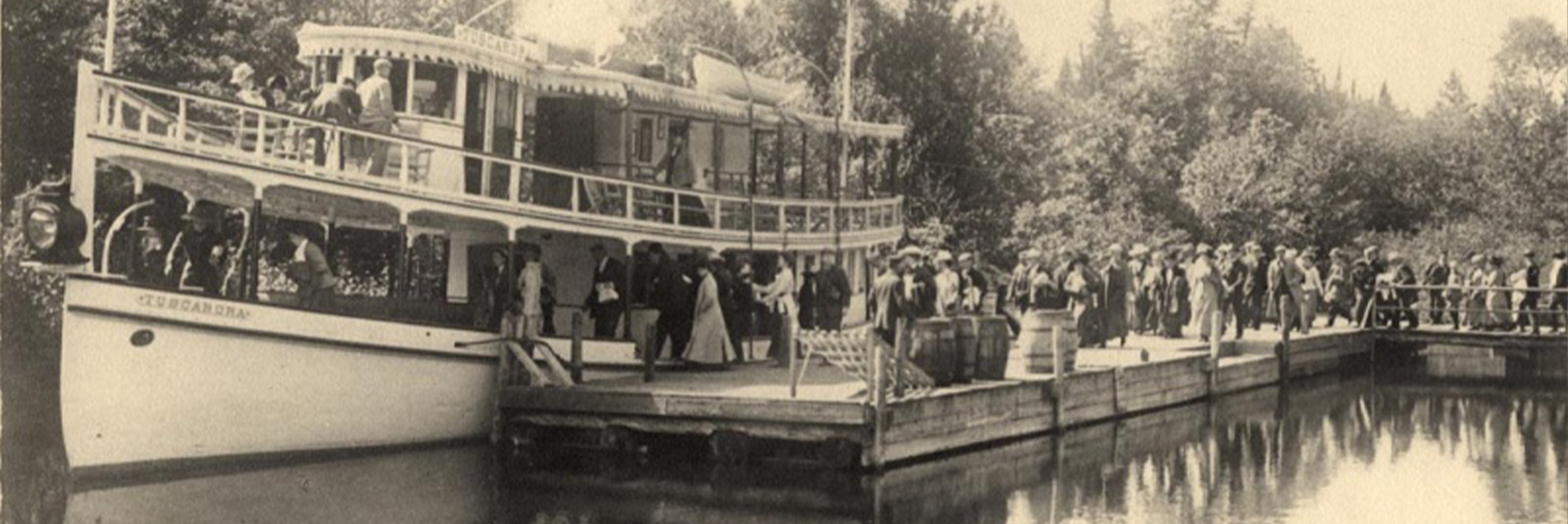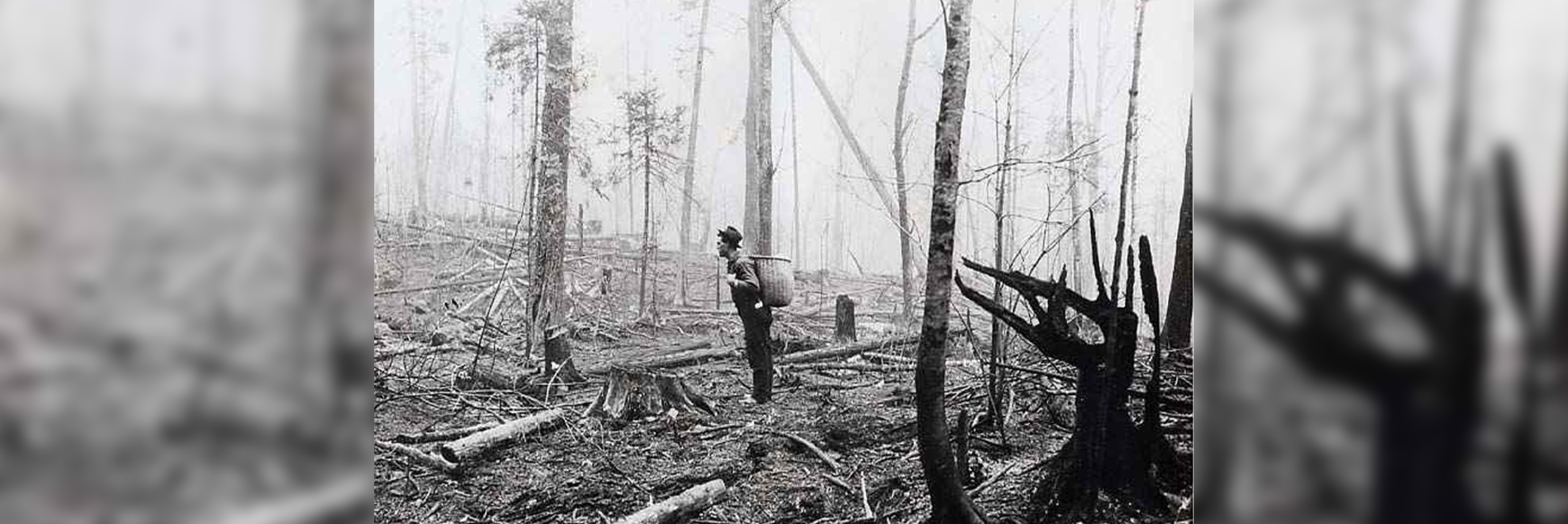Great Camp Foxlair
When you think of the interior decoration of Adirondack great camps, the first image to come to mind is usually of rustic furniture. However, this was not the case for great camp Foxlair, located near North Creek, New York, whose owner Richard Alexander Hudnut fashioned his residence in a French chateau style.
The tile stove in the photograph is a unique object in the Adirondack Museum’s collection. While it is not currently on display, it can be viewed when the museum offers curator-led tours of the stored collection. This stove, just one of the French imports furnishing the camp, is a wonderful and interesting object that highlights the difference in Foxlair’s décor. The stove measures 6 feet tall and is made from approximately 220 hand-painted tile blocks. It was imported from France in 1905.
The Foxlair stove not only illustrates an interesting contrast within the museum’s collection; it also provides a link to a camp that is no longer in existence. This piece was added to Foxlair in 1905; the camp was a family residence until 1938. Foxlair was then endowed to the Police Athletic League of New York City as a summer camp for boys. During this time the stove was hidden behind a false wall for protection. New York State bought the camp in 1959, and then due to impending changes within the state’s land use policy, the family viewed it imperative to rescue the stove in the mid-1960s, disassembling it piece by piece and removing it from the residence. The tiles from the disassembled stove were moved to a nearby residence that was owned by descendants of the Hudnut family. The tiles were carefully wrapped in insulation and packed in crates to ensure they would not be damaged during storage in the basement.
Then in the 1970s, Camp Foxlair was burned to the ground by the DEC in accordance with the Adirondack Park Agency’s (APA) Master Land Use and Development Plan, which requires all state land within the Forest Preserve be kept in a natural state. Therefore, it is believed that buildings on state land must be razed to return the area to a “wild” state.
This policy posed a number of questions, especially in terms of buildings that hold great historic and cultural significance. From the 1970s, when Foxlair was burned, through the 1990s there was significant debate over how to approach such questions. While it was too late to contest the issue of Foxlair, other great camps such as Santanoni in Newcomb, New York, which faced a similar fate, were a source of great conflict. How could the wilderness view of the Adirondacks as a sanctuary, untouched by all human influence, coexist with the reality that this region also has a rich history of settlement and human development?
Fortunately, through the efforts of groups such as the Adirondack Architectural Heritage, or AARCH, a compromise was reached on Santanoni and the APA reclassified Santanoni as an historic area within the Forest Preserve. This reclassification included the area immediately around the main house and the experimental farm complex. Through this decision AARCH, the town of Newcomb, and the DEC can act as partners in restoring the buildings of Santanoni and run an interpretive program. Currently Santanoni draws up to 10,000 visitors each year. More information about Santanoni is available at www.aarch.org/santanoni/santanoni.html.
The Foxlair Tile Stove was not reassembled until 2005, after conversation between the descendants of the family and the Adirondack Museum. The stove’s tile blocks were carefully packed and transported to the museum for cleaning and conservation. The project was like a large puzzle, and a key had to be created based on historic photographs to map out putting the pieces back together. The stove was rebuilt during 2004-2005 winter months. However, while the exterior appears complete, the stove was not brought back to working condition; it does not have a working firebox or chimney.
Note on Photograph: The image at the top of the page is of Foxlair’s master bedroom. The stove is the tall object located on the wall to the left/center of the image.


